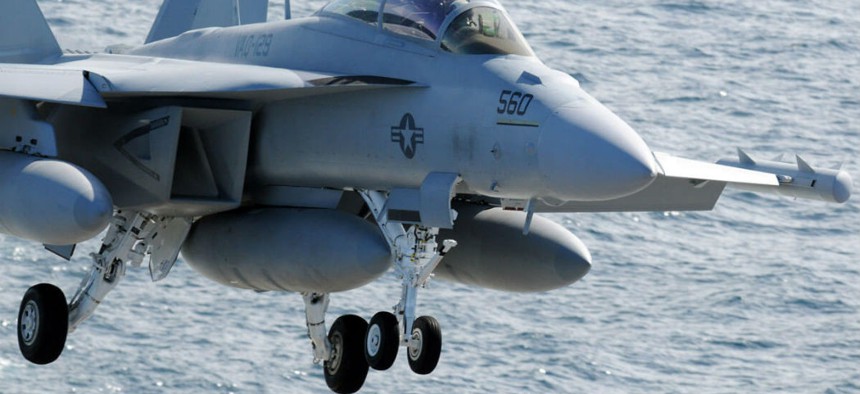Navy integrates new F-18 infrared sensor
Navy moves ahead with upgrades to fighter jet infrared sensor Summary: Boeing will develop the Super Hornet’s Block II infrared sensor, capable of operating in radar-denied environments
Development and procurement of Block II of the Infrared Search and Track (IRST) system for the F/A-18 E/F Super Hornet fighter jet will now move forward under a $89 million Navy contract with Boeing, according to the Department of Defense (DOD).
The IRST system’s passive long-wave infrared receiver (IRR) gives it the unique ability to detect and lock-in targets in situations where electronic warfare measures may be inhibiting to radar activity, according to a report on FY16 Navy Programs. ISRT Block II is specifically intended to provide engineering upgrades, improving the passive long-wave infrared receiver and updating the built-in processors. As such, Boeing is tasked with designing and developing potential new hardware and general technical product support, according to the DOD press release.
The IRR is immune to anti-radar electronic warfare because it can sense the electromagnetic, infrared thermal energy signatures of other aircraft. Specifically, those generated by the heat of an aircraft’s engines and sky-on-skin friction. The sensor can rely on its own telemetry, rather than radio signals, to transmit the information to the pilot, according to the FY16 Navy Programs report. Once the IRR fixates on the acquired target, the fighter jet pilot can engage it.
As a whole, the IRST system is designed to identify and destroy enemy targets or forces that are beyond visual contract or exist in a radar-denied environment. Aside from the passive long-wave infrared receiver, the system includes an inertial measurement unit and an environmental control unit, all contained within a sensor assembly structure, states a Boeing publication.
The sensor assembly structure is attached to the bomb rack of the F/A-18 E/F Super Hornet, via the fighter jet’s fuel tank. It provides the twin-engine, supersonic jet with enhanced situational awareness of both ground and air threats and targets, reports Boeing.
The Block II preliminary design review was scheduled to begin last month, and with this new contract award, Block II of the IRST system is scheduled for completion in April 2020.
NEXT STORY: Air Force launches new space war effort




